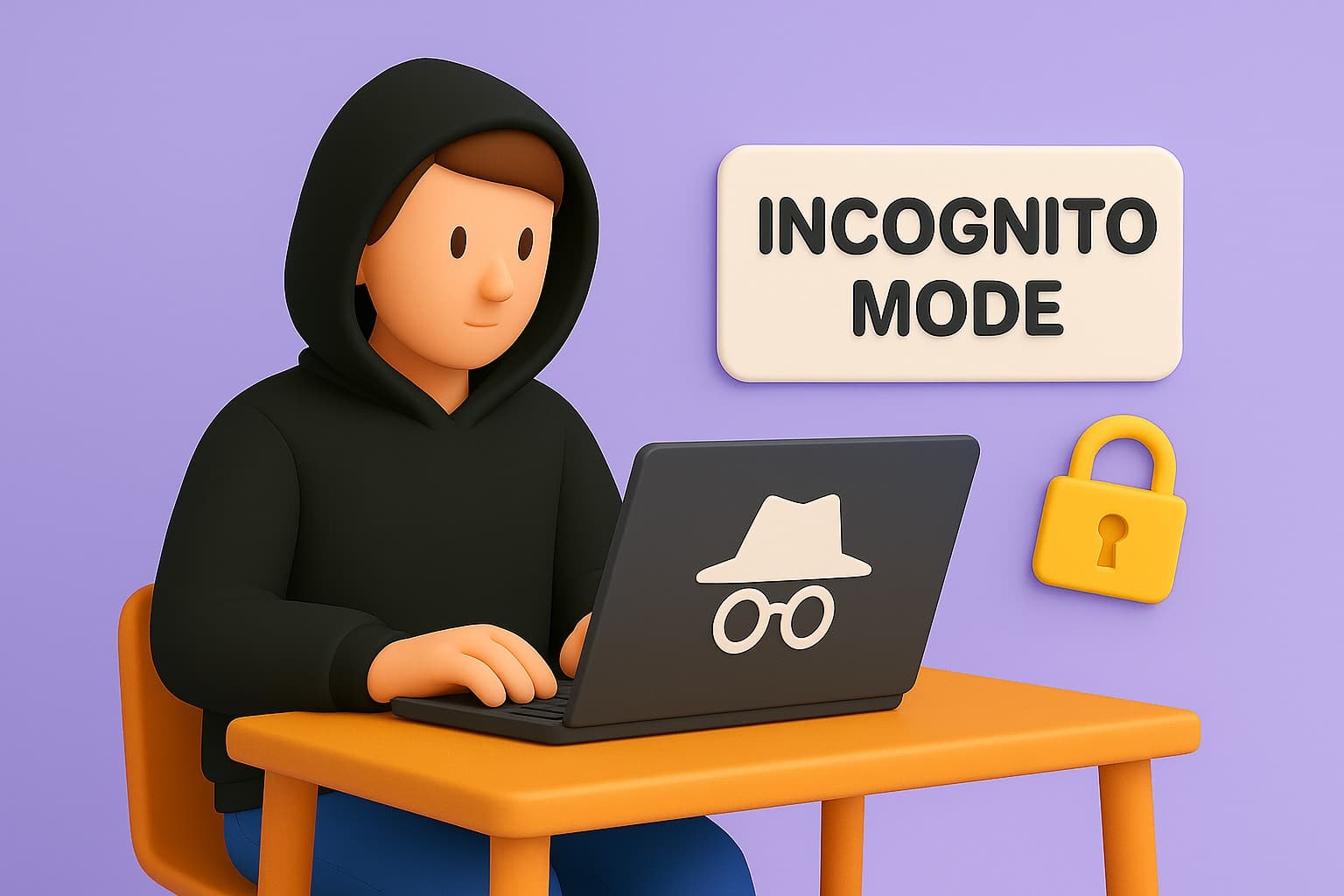Incognito Mode Is a Lie: The Myths of Private Browsing Explained

The Illusion of the Black Window
You’ve seen it — the dark window that promises secrecy.
Incognito Mode. Private Window. InPrivate Browsing.
The names sound cloak-and-dagger.
You open one and feel untouchable, as if you’ve stepped into a digital invisibility cloak.
But here’s the truth: Incognito Mode doesn’t hide you. It just resets the room.
The myth of private browsing survives because it feels good — not because it works.
What Incognito Actually Does
When you open an incognito tab, your browser simply stops storing local data:
- Browsing history
- Cookies
- Form autofill
That’s it.
What still sees you?
✅ Your ISP (internet provider)
✅ Your employer or school network
✅ Every website you visit
✅ Every tracker, fingerprint, and ad pixel
Incognito Mode is privacy cosplay — convincing for casual browsing, invisible to everyone who matters.
The False Sense of Security
Incognito Mode is as much psychology as technology.
It creates a “safe-feeling” space for things you don’t want saved locally — checking symptoms, shopping gifts, logging into multiple accounts.
But while your local browser forgets,
the rest of the internet remembers.
Think of it like renting a hotel room under a fake name:
- The front desk still has your credit card
- The cameras still record you
- Your phone still pings your location
You’re not private — you’re just less accountable to yourself.
The Real Trackers You Can’t See
Here’s what still tracks you even in Incognito Mode:
IP address – visible to every site without a VPN
Browser fingerprinting – screen size, fonts, extensions, device
Network logs – your Wi-Fi or ISP logs every destination
Account logins – the moment you log into Gmail or Amazon, you're fully identified
Embedded trackers – ad networks and analytics stitch your sessions together
Yes, you can hide your gift searches from your spouse.
But not from Google Analytics.
The “Privacy Theater” of Modern Browsers
Tech companies know users won’t read fine print—so they sell privacy in aesthetic form.
✅ Dark window
✅ Disappearing tabs
✅ Comforting padlock icon
Underneath?
The same surveillance machine humming along.
Security experts call it privacy theater — a performance that looks protective but changes nothing.
Even Google admitted in lawsuits that users were misled to believe Incognito Mode stopped tracking.
They were still collecting analytics data from “private” sessions.
The Economics of Pseudo-Privacy
Why don’t browsers make Incognito truly private?
Because real anonymity is bad for business.
Ad networks rely on:
- Cross-session tracking
- Behavior profiling
- Identity linking
If Incognito truly anonymized you, it would break the ad economy.
So instead, they give you the illusion of privacy —
a placebo powerful enough to keep you clicking.
Private browsing isn’t a feature.
It’s a compromise between comfort and capitalism.
How to Actually Browse Privately
Real privacy isn’t one button — it’s a stack of habits.
✅ Use a VPN – hides your IP and encrypts traffic
✅ Use privacy-first browsers – Brave, Firefox (with ETP)
✅ Block trackers/scripts – uBlock Origin, Ghostery, Privacy Badger
✅ Use Tor for maximum anonymity
✅ Don’t log in – identity kills anonymity instantly
✅ Use burner emails for one-time signups
Privacy isn’t a button. It’s a behavior.
The Deeper Problem: We Expect Privacy From the Wrong Places
The tragedy of Incognito Mode isn’t that it fails — it’s that we believed it could succeed.
Privacy isn’t a product feature.
It’s a network condition.
And the network itself is built for visibility, not secrecy.
The internet was built for openness.
Then retrofitted for profit.
Not protection.
Your data passes through too many hands
for a single tab theme to save you.
The Truth Behind the Black Window
That sleek dark UI doesn’t make you invisible.
It just makes the lie more elegant.
Incognito Mode is digital lipstick on a surveillance machine.
When browsers offer you a “private window,” remember:
The only person it truly hides your history from — is you.